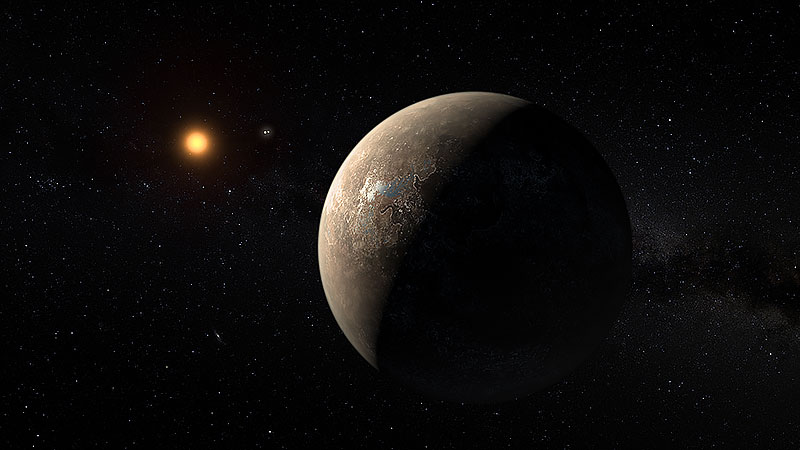Proxima Centauri << PROK suh muh sehn TAWR eye >> is the nearest known star to the sun. Astronomers classify Proxima Centauri as a red dwarf—that is, a small, relatively cool star that glows with a dim, reddish light. It is too faint to be seen in the sky without a telescope.


Proxima Centauri was discovered in 1915 by the Scottish astronomer Robert Innes at Union Observatory in Johannesburg, South Africa. He noticed the star as he was comparing photographic plates of its brighter companion, Alpha Centauri. He determined that the newly discovered star was closer to the sun, and he named it Proxima, the Latin word for nearest. Proxima Centauri is about 4.2 light-years from the sun and Earth, and about 0.1 light-year from Alpha Centauri. One light-year equals the distance light travels in a vacuum in a year—about 5.88 trillion miles (9.46 trillion kilometers).
In the sky, Proxima Centauri is in the constellation Centaurus. It can be seen from most of Australia, from New Zealand and Antarctica, and from the southern half of South America and the tip of South Africa. The constellation is named for the centaur of Greek mythology. In art, the centaur is portrayed with the upper body of a person and the lower body of a horse. Centaurus surrounds the constellation called the Southern Cross, also known as Crux.
Astronomers have determined that Proxima Centauri is only about one-seventh the diameter of the sun. This makes the star about 1.5 times larger than the planet Jupiter. Because of Proxima Centauri’s small size and mass, its surface is much cooler than the sun’s. Astronomers measure star temperatures in a metric unit called the kelvin (abbreviated K). One kelvin equals 1 Celsius degree (1.8 Fahrenheit degrees) above absolute zero. Absolute zero, the lowest possible temperature, is –273.15 °C (– 459.67 °F). The temperature at the surface of Proxima Centauri is only about 3,042 K compared with the sun’s surface temperature of about 5,800 K.
The low temperature gives Proxima Centauri a red appearance, and astronomers classify it in the spectral class M5.5 (see Star (Spectral classes)). Proxima Centauri is redder than the familiar and easily visible red giant stars Betelgeuse (spectral class M2) in the constellation Orion and Antares (spectral class M1.5) in the constellation Scorpius. Red dwarf stars shine much longer than other stars because they burn through their hydrogen fuel more slowly. Astronomers believe that Proxima Centauri could burn for several trillion years—a period much longer than the life span of our sun.
Astronomers have discovered evidence that multiple exoplanets orbit Proxima Centauri. One or more of these planets may orbit within Proxima Centauri’s habitable zone, the region around a star in which liquid water could exist on a planet’s surface. Most scientists consider liquid water to be an essential ingredient for life. However, astronomers know that Proxima Centauri is a flare star—that is, a star that produces intense outbursts of material from its surface. Astronomers believe that such flares could blast away a planet’s atmosphere and any surface water, making it an unlikely place for life to develop.
